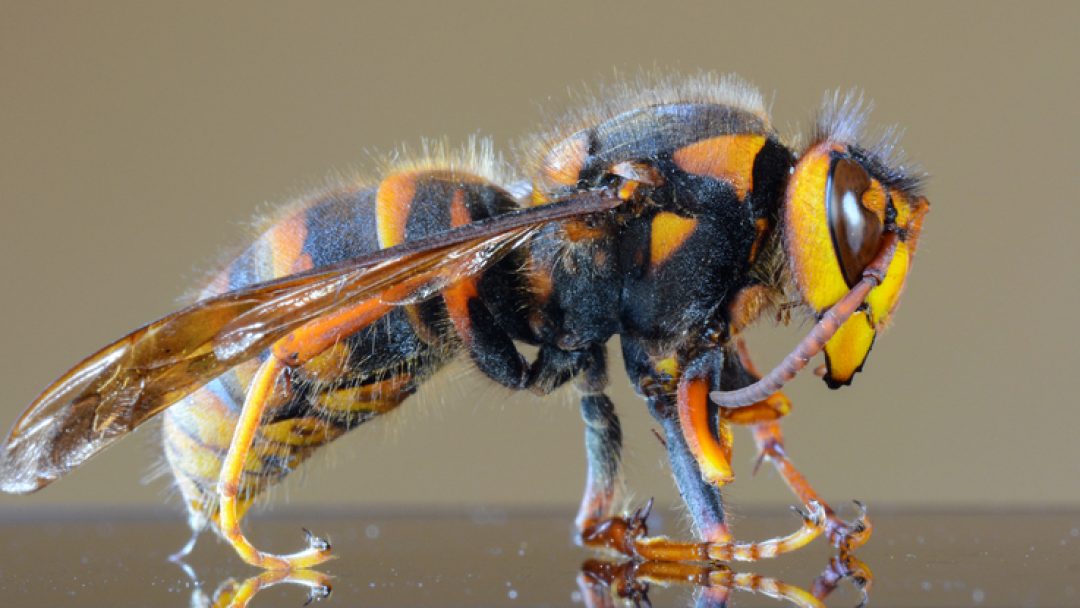They raid beehives and decapitate their victims, possess stingers long enough to penetrate several layers of clothing and have the terrifying nickname of murder hornets.
Asian giant hornets have recently been spotted in the Pacific Northwest. The Washington state Department of Agriculture has had two confirmed sightings of these insects, and they have shown up in other countries outside of Asia including Canada and the United Kingdom.
The Washington sightings are the first in the United States, and a May 2 story in the New York Times has brought the insects to the public’s attention. That exposure has prompted questions such as where are murder hornets found and will they will come to Arizona?
What is a murder hornet?
Asian giant hornets are also known as yak killer hornets and giant sparrow bees, but the nickname that, understandably, gets the most attention is murder hornet.
They get that name from their fearsome raids on bees in which they enter hives, rip the heads off bees and carry the bodies back to their own young. Piles of dead bees is what brought the hornets to the attention of authorities in Washington.
The bees have an interesting way of fighting back, however.
When they detect the hornets’ scent markers, hundreds of bees gather near the entrance to the hive to wait for an intruder. When the hornet enters, the bees surround it in a ball of bees. They then beat their wings in a way that raises the temperature and carbon dioxide levels within the ball to levels that the hornet cannot survive.
How big are murder hornets?
The Asian giant hornet is about 2 inches long with about a 3-inch wingspan. The hornet’s head is orange with large dark eyes and large jaws capable of decapitating its prey.
Queen bees and workers have stingers that are about a quarter-inch long and capable of piercing the protective suits beekeepers wear.
Can murder hornets kill a human?
Dawn Gouge, an entomologist with the University of Arizona, said the murder hornet is one of the few stinging insects that can kill due to the toxicity of its venom. Most deaths from insect stings are the result of an allergic reaction to the venom.
They have a pretty nasty sting,” Gouge said of the Asian giant hornet. “The western honeybee’s venom is more toxic but (Asian giant hornets) inject in such hugely higher doses. They can inject 10 times more venom than a honeybee.”
Gouge said it would take dozens, if not hundreds, of stings to kill a person but it is possible.
In Japan, the hornets kill about 25 people each year.
Are murder hornets in Arizona?
There have been no confirmed sightings of murder hornets in Arizona. Gouge said it’s unlikely the bugs would do well here.
She said the hornets tend to be found in temperate climates but have been reported in subtropical areas as well. They thrive in forested areas, feeding on oak tree sap and like to nest underground, often in the burrows of small animals.
While Arizona does have forested areas, the giant hornets aren’t often found at high altitudes.
“I don’t see Arizona as being at high risk,” Gouge said. “They really do like to be in undisturbed areas,” Gouge said. “They don’t cohabit well with people.
The hornets in the New York Times story were found months ago. After the story was published, pieces on murder hornets appeared in USA TODAY, CNN, the New York Post, National Geographic among many other outlets.
Gouge said she had been aware of the Asian giant hornets but had not read any of the reports about the insects that appeared over the weekend.
She realized something was up when she received a flurry of emails. Some colleagues were checking to see if an especially large wasp she found last year had actually been an Asian giant hornet.
“We found a really large paper wasp last year,” she said. “People were asking, ‘just what was it you found?’ It definitely wasn’t a hornet.”
Click here to view the original NYT article.








